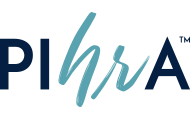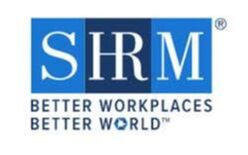|
Acquiring new talent can be one of the most difficult tasks a firm takes on in order to stay in business. From posting jobs and interviewing, to determining who the best candidates are, and then making offers, the process is quite complex. Within the last several years, larger companies turned to artificial intelligence as a way to assist in this process. Replacing warm-blooded human resource (HR) professionals with machines was seen as a way to reduce costs and review resumes more efficiently. But is this really the case? Today, we’re going to provide a brief analysis on artificial intelligence (AI) and its benefits and costs to a company. Talent acquisition is a complex and expensive task that every company must face when they are attempting to maintain their position in a marketplace or foster growth. On average, business owners need to apply a minimum factor of 1.25 to 1.4 times the salary that the candidate is actually going to receive in compensation. For example, including benefits, if an employee is to receive $50,000.00, then one would need to budget at least $62,500.00, and even as much as $70,000.00, in order to secure the best candidate. These extra costs include the time that company personnel take to promote, screen, interview, and hire a new employee (Hadzina, 2005). One article that we reviewed, shows that it may take upwards of a quarter of a million dollars to obtain the right candidate (Seseri, 2018). Ouch!
That is precisely where AI comes into play. Through the use of computing technology, various technological firms have found ways to mimic human thinking in an attempt to streamline the amount of resources it takes to get the best employee for the job. There are three (3) levels of AI: weak, middle, and strong. The majority of AI used in HR departments are ones that fall in the middle. They apply human reasoning as a guide to filter resumes and provide some assistance in the decision-making process (Sabel, 2017). In most cases, depending on the complexity of the AI used, it may also include a human somewhere in the loop or none at all (McLaren, 2018). Looking at the benefits and drawbacks of this technology is especially important when trying to determine the best candidate when it comes to ramping up a business or replacing talent that moves on for greener pastures. Benefits of Using AI in HR Arguably, there are certainly a number of benefits of using AI when it comes to hiring new candidates. Realistically, one of the biggest benefits is the automation of high-volume tasks. For example, ideal.com states that “52% of talent acquisition leaders say the hardest part of recruitment is identifying the right candidates from a large applicant pool” (ideal.com, 2018). They dive deeper into the analysis, and make note that it can take a full calendar day (23 hours) to screen resumes for an individual hire, on average. AI can reduce this task to a matter of seconds which, in turn, can provide HR recruiters with an enormous amount of time to spend determining the best hire(s) for positions they’re looking to fill. A second big advantage of applying AI in an HR setting, is the ability to filter a candidate’s interests and skills. When recruiters (internal or external – e.g. through a job agency) are looking at resumes, the more they have to review, the more tunnel vision is likely to set in. Firms often use set criteria as a filter to screen candidates. The downside of this, however, is that “HR professionals can unintentionally suffer from tunnel vision and are in danger of overlooking valuable talent” CareerBuilder UK, 2016). Bias sets in, and persons that are more than capable of doing the job don’t get the light of day to showcase their talents when they may be the best one for the position. The good news, is that AI has no bias. Since it has no feelings, everyone is on an equal weight prior to the start of the filtering process. One final advantages of applying AI in HR practices are the economical and time benefits a firm can receive, once implemented. Ideal.com provided some substantially potent statistics from their client experiences via their website. In their case, the cost per candidate screen (a measure often used when justifying expenses for a candidate) is reduced by 75% when using AI technologies. On the revenue side, it was noted that revenue per employee increased by 4%, which leads to a 20% performance increase and 35% decrease in turnover. Of course, the larger the firm, the more significant these benefits are going to be. Costs of Using AI in HR Though most of the benefits aforementioned reduce costs and naturally assist the firm in some way, there are still some pretty daunting challenges that lie ahead for using this within a firm. One of the most controversial drawbacks is the thinking patterns of AI. A lot of people understand that a machine has no feelings and is programmed to treat everyone the same. This hasn’t and wasn’t the case with Amazon. Reuters author, Jeffrey Dastin, reported that the firm’s engineers tasked with applying machine learning to screen candidates has significant bias against women (2018). Attempting to edit programs, they tried to program the decisions made by the AI’s software to be more gender neutral, because it learned human biases as it evolved (Ideal.com, 2018). Even with the tweaks in place, other issues were discovered (e.g. unqualified candidates were passed over, whereas highly qualified candidates were rejected). Conclusively, AI can be used to supplement the recruiting process and not completely replace it – well not now anyways. A second big challenge of applying AI in HR decision making, is the amount of data required in order for it to be successful. The amount of time an AI system needs in order to learn, filter, and screen candidates properly is significant. It may take hundreds or thousands of resumes for just one position in order to get the results close to a positive result. Piggybacking on the first drawback, if this is not done correctly, then a company can potentially find themselves in hot water from candidates claiming they were discriminated against because they were denied based on a protective class (e.g. gender, age, etc.) (Dastin, 2018). One final drawback of using AI, is the fact that the personal element of recruiting has been eliminated. Many of the articles hinted at candidates being ‘ghosted’ after applying to positions they felt that they were well qualified for. As AI deepens its foothold in the HR industry, one can argue that interaction with personnel in HR is deemed to disappear. Since a number of the tasks that once required human interaction have become automated, communication is often put off to the side. As Jonathan Grana commented in his article on the website Interseller.io, he stated that if a candidate is always communicating to a machine or chatbot when she tries to interact with a company, it will discourage good talent from joining your company (2018). There has to be a fine balance between using AI and having human interactions with potential candidates. Man vs. Machine in the HR World – The Conclusions Now that one has a good understanding of some of the benefits and drawbacks of using AI in HR, it is clear to see that this is certainly not a perfect tool to implement. And that is not to say that AI doesn’t have a number of benefits that can be used to help streamline hiring processes; it does, but those come with equally damaging costs. What was conclusive in the articles reviewed, is that more companies will go towards using some level of complexity of AI in the future. With the hope that machines don’t take over the world as depicted in a number of movies over the last 30 plus years, the balance of the human touch with a digital helper will be the only way that this technology will be successful. What are your thoughts when it comes to implementing AI technologies in the workplace? Leave your response below and give us your thoughts. References
2 Comments
12/8/2021 09:58:48 pm
I would like to formally and sincerely express my gratitude for the amazing work you accomplished in this article. My best wishes
Reply
Leave a Reply. |
AuthorDr. Danielle Jenkins provides insights and tips on how to strategically run your business in the most efficient manner possible. Archives
June 2019
Categories
All
|
Proudly partnered in the community with the following organizations
|














